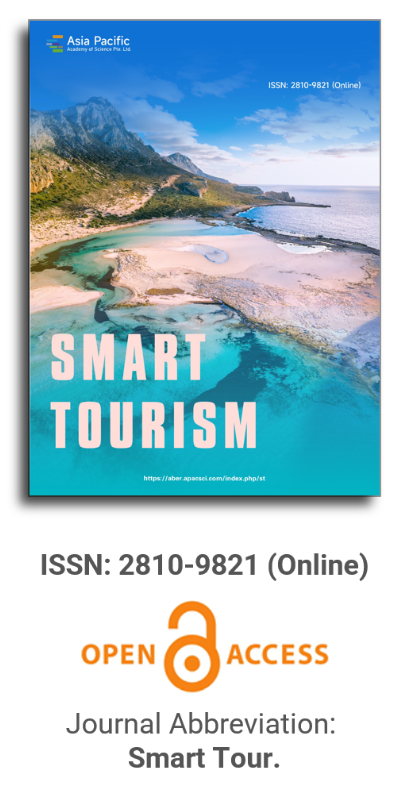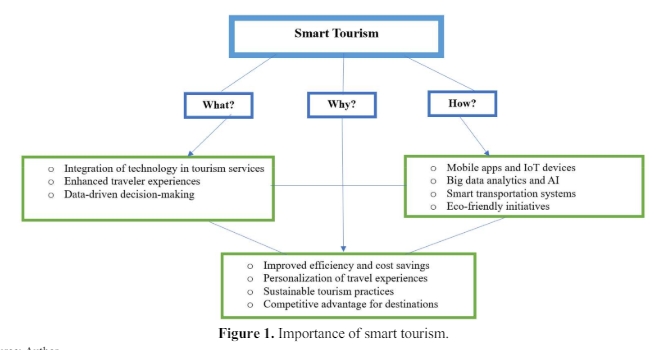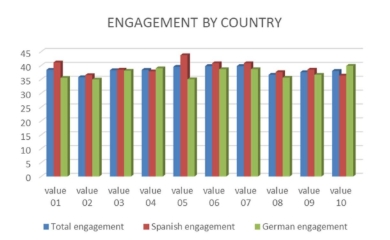


Tourism development: A capacity dynamic
Vol 4, Issue 1, 2023
Download PDF
Abstract
The internationally adopted definition of tourism prompts to develop a systemic dynamic approach of tourism development. The paper proposes to conceptualize tourism development as a system interlinking three agents: transport, domestic tourism activities and the visitor; generating three types of development tourism development dynamics. In a second step, it uses this framework to develop, with a minimalist set of hypotheses, a capacity-based model enabling to consider destination tourism development as a microfounded supply-driven systemic dynamic process. Through the lens of the model, exhaustion or asymmetric distribution of market power may halt destination tourism development. Using the model’s framework, the structuring forces of the Tourism Area Life Cycle (TALC) are explained by the dual impact of capacity dynamics: accelerating by increasing arrivals, and at the same time decelerating by declining price elasticities.
Keywords
References
- ONU, OMT, OCDE, Eurostat. Tourism Satellite Account: Recommendations for the 2008 Conceptual Framework (French). Luxembourg, Madrid, New York, Paris; 2008.
- Breakey NM. Tourism destination development-beyond butler. Available online: https://core.ac.uk/download/pdf/15055094.pdf (accessed on 2 January 2023).
- Butler RW. The concept of a tourist area cycle of evolution: implications for management of resources. Canadian Geographies/GÉOgraphies Canadiennes 1980; 24(1): 5–12. doi: 10.1111/j.1541-0064.1980.tb00970.x
- Lim C. A survey of tourism demand modelling practice: issues and implications. In: Dwyer L, Forsyth P (editors). International Handbook of Tourism Economics. Edward Elgar; 2006. pp. 45–72.
- Stabler MJ, Papatheodorou A, Sinclair T. The Economics of Tourism. Routledge; 2010.
- Li G, Song H, Witt SF. Recent developments in econometric modeling and forecasting. Journal of Travel Research 2005; 44(1): 82–99. doi: 10.1177/0047287505276594
- Sinclair T, Stabler M. The Economics of Tourism, 3rd ed. Routeledge; 2002.
- Deaton A, Muellbauer J. An almost ideal demand system. The American Economic Review 1980; 3: 312–326.
- Lancaster KJ. Consumer Demand: A New Approach. University Press; 1971.
- Anas A. Taste heterogeneity and urban spatial structure: The logit model and monocentric theory reconciled. Journal of Urban Economics 1990; 28(3): 318–335. doi: 10.1016/0094-1190(90)90031-h
- Morley CL. Experimental destination choice analysis. Annals of Tourism Research 1994; 21: 780–791.
- Alegre J, Pou L. The length of stay in the demand for tourism. Tourism Management 2006; 27(6): 1343–1355. doi: 10.1016/j.tourman.2005.06.012
- Son Song H, Dwyer L, Li G, et al. Tourism economics research: A review and assessment. Annals of Tourism Research 2012; 39(3): 1653–1682. doi: 10.1016/j.annals.2012.05.023
- Son Song H, Witt SF, Li G. The advanced econometrics of tourism demand. Routledge; 2009.
- Divisekera S. Empirical estimation of tourism demands models: a review. In: Tisdell CA (editor). Handbook of Tourism Economics. World Scientific Publishing CO. Pte. Ltd; 2003. pp. 67–86.
- McIntosh RN, Goeldner CR, Ritchie JR. Tourism, Principles, Practices, Philosophies, 7th ed. John Wiley & Sons; 1995.
- Prideaux B. The role of the transport system in destination development. Tourism Management 2000; 21(1): 53–63. doi: 10.1016/s0261-5177(99)00079-5
- Lumsdon L, Page S. Tourism and transport: Issues and Agenda for the New Millennium. Routledge; 2004.
- Gay JC. Transport and tourism of the world (French). Collection EDYTEM Cahiers de géographie 2006; 4(1): 11–22. doi: 10.3406/edyte.2006.960
- Page S. Transport and Tourism: Global Perspectives, 3rd ed. Pearson Education Limited; 2009.
- Lohmann G, Duval DT. Critical Aspects of the Tourism-Transport Relationship. Contemporary Tourism Reviews. Goodfellow Publishers; 2011.
- UNWTO. Global Report on Aviation: Responding to the Needs of New Tourism Markets and Destinations. World Tourism Organization (UNWTO); 2012.
- Durand D. Systemics (French), 13 ed. Presse Universitaire de France; 2017.
- Candela G, Figini P, Scorcu AE. The economics of local tourism systems. In: Brau RA., Lanza S (editors). Usai Tourism and Sustainable Economic Development: Macroeconomic Models and Empirical Methods. Edward Elgar; 2008.
- Candela G, Figini P. Destination unknown. Is there any economics beyond tourism areas? Review of Economic Analysis 2010; 2: 256–271.
- Andergassen R, Candela G, Figini P. An economic model for tourism destinations: Product sophistication and price coordination. Tourism Management 2013; 37: 86–98. doi: 10.1016/j.tourman.2012.10.013
- Alexiou C. A Keynesian-Kaleckian model of investment determination: A panel data investigation. Journal of Post Keynesian Economics 2010; 32(3): 427–444. doi: 10.2753/pke0160-3477320307
- Stevens GVG. Internal funds and the investment function. Southern Economic Journal 1994; 60(3): 551. doi: 10.2307/1060566
- Fazzari SM, Mott TL. The investment theories of Kalecki and Keynes: An empirical study of firm data, 1970–1982. Journal of Post Keynesian Economics 1986; 9(2): 171–187. doi: 10.1080/01603477.1986.11489611
- Samuel C. Internal Finance and Investment: Another look. The World Bank Policy Research Working Paper Series 1663; 1996.
- Bull AO. Industrial economics and pricing issues within tourism enterprises and markets. In: Dwyer L, Forsyth P (editors). International Handbook of Tourism Economics. Edward Elgar; 2006. pp. 138–154.
- Singh N, Vives X. Price and quantity competition in a differentiated duopoly. The RAND Journal of Economics 1984; 15(4): 546. doi: 10.2307/2555525
- Amir R, Erickson P, Jin J. On the microeconomic foundations of linear demand for differentiated products. Journal of Economic Theory 2017; 169: 641–665. doi: 10.1016/j.jet.2017.03.005
- Butler RW. Tourism area life cycle Vol.1, Vol. 2, Channel View Publications, Clevedon, United Kingdom—New York, USA—North York, Ontario, Canada. 2006.
- Lundtorp S, Wanhill S. The resort lifecycle theory. Annals of Tourism Research 2001; 28(4): 947–964. doi: 10.1016/s0160-7383(00)00080-3
- Lozano J, Gómez CM, Rey-Maquieira J. The TALC hypothesis and economic growth theory. Tourism Economics 2008; 14(4): 727–749. doi: 10.5367/000000008786440166
- Johnston RJ, Tyrrell TJ. A dynamic model of sustainable tourism. Journal of Travel Research 2005; 44(2): 124–134. doi: 10.1177/0047287505278987
- Casagrandi R, Rinaldi S. A theoretical approach to tourism sustainability. Conservation Ecology 2002; 6(1). doi: 10.5751/es-00384-060113
- Faria JR. Demographic and technological growth in the tourism market. Tourism Economics 2008; 14(1): 115–121. doi: 10.5367/000000008783554776
- Li J, Chen Z. A new interpretation of the model of tourism life cycle: based on production investment and demand analyses. Tourism Tribune/LvyouXuekan 2014; 29(3): 58–72.
- Kato A, Mack J. Technical progress in transport and the tourism area life cycle. In: Tisdell CA (editor). Handbook of Tourism Economics. World Scientific Publishing CO. Pte. Ltd; 2003. pp. 67–86.
Supporting Agencies
Copyright (c) 2023 Bruno Marques
License URL: https://creativecommons.org/licenses/by/4.0/

This site is licensed under a Creative Commons Attribution 4.0 International License (CC BY 4.0).

Prof. Hung-Che Wu
Nanfang College, Guangzhou
China
Indexing & Archiving
Asia Pacific Academy of Science Pte. Ltd. (APACSCI) specializes in international journal publishing. APACSCI adopts the open access publishing model and provides an important communication bridge for academic groups whose interest fields include engineering, technology, medicine, computer, mathematics, agriculture and forestry, and environment.



.jpg)
.jpg)

.jpg)

